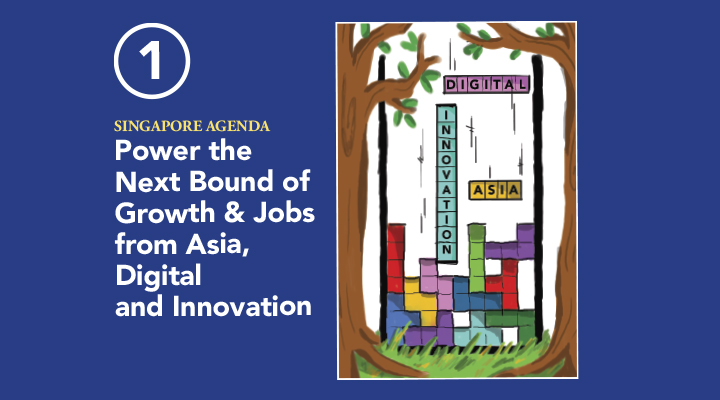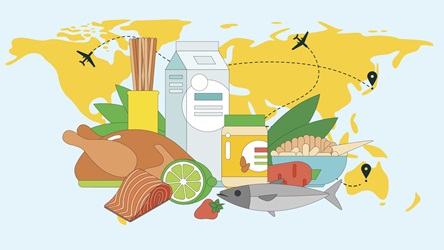Singapore Agenda: The End Of Print?

As the Bob Dylan song goes, the times, they are a’changing – and all things eventually come to an end. Or do they?
Like many print publications produced commercially and by public agencies, Challenge is going paperless and fully digital. For many, digitalisation marks the end of paper and analogue systems. It also heralds a new beginning – a new era of digital systems and new ways of working.

You may have noticed the dwindling of print magazines on retail racks and in your mailboxes, if you’re a print subscriber. Newspapers, too, are reducing their print runs and finding new ways to reach readers on digital platforms, including tablets and chat apps such as Telegram.
With readers’ attentions taken up by digital screens, and to cut the costs of printing and distribution, print serial publications by public agencies are also shifting to digital-only modes, relying more on websites and social media channels to reach out to audiences.
The publishing industry is far from the only one transformed by an increasingly digital economy.
The digital economy encompasses the production and consumption of digital products and services, digital platforms and business activities that are enabled by digital technologies. This includes something as simple as email to more sophisticated examples such as data analytics and artificial intelligence.
By 2025, Southeast Asia’s digital economy could triple in size to S$415 billion, based on a report by Temasek, Google and Bain & Company. This creates numerous opportunities for companies, making it easier for them to serve businesses and individuals in the region and across the world. A local company can now access customers beyond Singapore through digital platforms such as Shopee, and gain insights about their customers through services like Google Analytics.
Even services with a high human touch, such as professional home-based nursing care or nail and beauty services, have benefited from tapping the conveniences of going digital. Apps such as Homage and Vaniday offer options to quickly find and schedule such services.
The digital economy also brings opportunities to workers – and not just those in tech industries. Digital platforms allow workers to offer their services and connect with customers more effectively.

Challenges
The conveniences of the digital economy also bring challenges in the form of cyber-security issues, regulation and even international agreements.
With new services enabled by mobile apps and digital platforms, Singapore’s land transport regulators, for example, have had to keep up with challenges brought about by private-hire cars and shared bike platforms.
Other regulators in the Public Service will have to think of issues such as content regulation and enabling secure data sharing. Our free trade negotiators are also busy conceptualising what digital economy agreements between governments should look like.
To better work with technology producers in the private sector, the Public Service set up the Digital Industry Singapore Office in June 2019 to unlock opportunities and create an estimated 10,000 new jobs within the tech sector.
In sum, digital technologies offer significant potential to empower individuals and transform industries– creating huge shifts in society, lifestyles and work arising from the digital economy.
Features of a digital economy
A digital economy includes
- Data as a source of value
- The use of advanced ICT-related hardware and software, including artificial intelligence
- New business models that both enable and disrupt businesses
- A new role for consumers as a source of innovative ideas for producers
SGPA THRUST #1
Power the Next Bound of Growth & Jobs from Asia, Digital and Innovation
The rise of the digital economy is just one of the many trends that will affect Singapore and how we chart our growth as an economy.
As part of building our future Singapore, how will we refresh Singapore’s economic strategy to seize new opportunities, build new sources of growth and create new jobs for Singaporeans?
We will do this by:
- Seizing new external economic opportunities in Asia, digital and innovation
- Aligning economic and social policies more closely in the next bound of economic restructuring and workforce development

“With rapid transformation of the international economic landscape, we have to be prepared that the strategies we’ve used so far might not work well anymore. The game is changing, we have different pieces to work with, and what comes after might be even more different. At the same time, forces like automation and technology pose a challenge to some of our fundamental assumptions. How can we turn these challenges into opportunities.”
RELATED STORIES
- POSTED ON
Mar 19, 2020
- TEXT BY
Tuber and Strategy Group, Prime Minister’s Office
- PHOTOS BY
Kelvin Yup on Unsplash
-
Deep Dive
Strengthening Singapore’s Food Security
-
Deep Dive
Singapore Agenda: The End Of Retirement?









